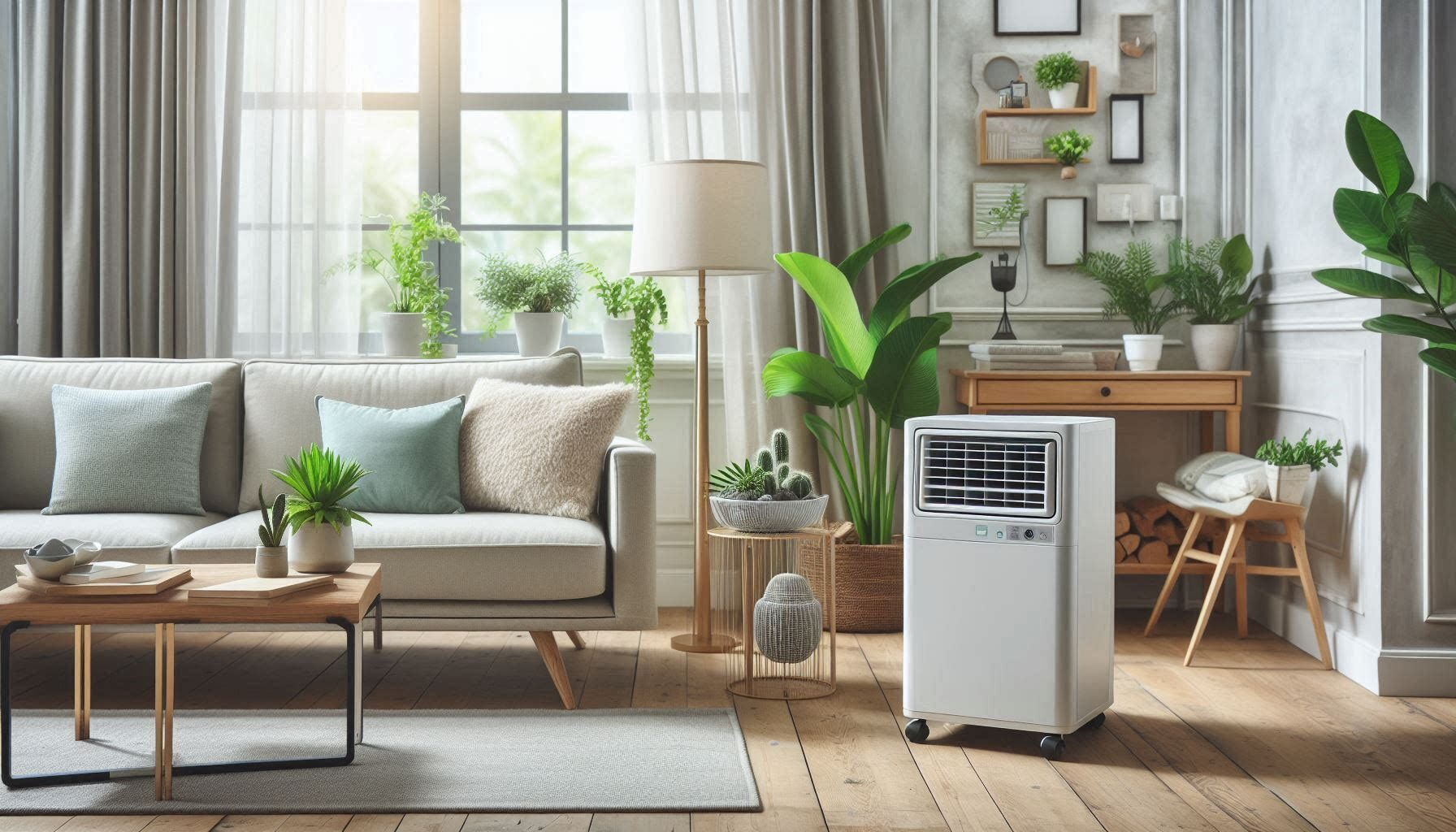Portable Air Conditioner are split & ducted condensing units shall be with single compressors, each with its own independent refrigerant circuit couple with selected fan coil units (wall mounted, ceiling concealed, ceiling cassette or ceiling exposed type). The split units are completely factories packaged, wired and provided with shut off valves for convenient connection to the suitably selected direct expansion fan coil units.
Each refrigerant circuit of this package shall be constructed using copper piping with brazed connections; joining compressor, condenser coil, filter drier, sight glass, thermo-expansion valve and evaporator cooling coil in a completely sealed loop. The refrigerant circuit shall also be factory leak tested, dehydrated, evacuated and pre-charged with R410A.
The air-cooled condensing section shall consist of the compressor(s); condenser coil; centrifugal condenser fan(s) with motor and drive assembly, factory packaged switchboard, safety and operating controls.
Click here to the complete range of trending products in the market.The evaporator blower section shall consist of the direct driven centrifugal blower fan and motor assembly; direct expansion coil complete with thermo-expansion valve(s), remote controller and a filter frame for flat filters.
Air-Cooled Condensing Section
Casing
All steel parts shall be coated with epoxy-acrylic electro-deposition (ED) paint. Prior to ED coating, the part shall undergo a complete pretreatment process, which involves degreasing, phosphating and rinsing with de-ionized water.
Compressor(s)
Compressors shall be of sealed hermetic rotary, reciprocating or scroll type, with suction gas-cooled motor, internal suspension system to eliminate vibration, internal line or solid state protection and external crankcase heater. Unit shall have multiple compressors and each shall have its own independent refrigerant circuit and controls. Compressor shall also be pre-charged with oil.
Condenser Coil(s)
Each coil shall consist of staggered row of 3/8″ OD seamless copper tubes, mechanically expanded into die-formed corrugated hydrophilic-coated aluminium fins. Each coil shall also be provided with integral sub cooling circuit. Coils shall be leak and pressure tested to 450 psig.
Condenser Blower(s)
The condenser fans shall be centrifugal types. Fan shall be statically and dynamically balanced and shall be mounted on a solid steel shaft running in self-aligning ball bearing, amply sized for quiet operation and long life. The condenser fan shall be driven directly by a resiliently mounted squirrel cage induction motor with adequate horsepower for the day.
Factory Packaged Switchboard
The multi split condensing unit shall be completed with built-in factory wired starters for compressors, condenser fan motor, indicating lights, line fuses, isolator and interlocking points for fan motors of evaporator blower unit. Factory packaged starters for compressors shall be direct on line type.
Safety Controls
The multi split condensing unit shall be completed with built-in factory wired starters for compressors, condenser fan motor, indicating lights, line fuses, isolator and interlocking points for fan motors of evaporator blower unit. Factory packaged starters for compressors shall be direct on line type.
Evaporator Blower Section
Evaporator Coil(s)
Each coil shall consist of staggered row of seamless copper tubes mechanically expanded into die-formed corrugated hydrophilic-coated alluminium fins, spaced 12 per inch. The direct expansion coil(s) shall have one or multiple independent refrigerant circuits each with its own thermo-expansion valve. Each coil shall be leak and pressure tested to 450 psig, evacuated and pre-charged with a small holding charge of R410A.
Blower
Centrifugal blower(s) of forward curved multi-blade type shall be fitted to the air conditioning unit. Blower shall be statically and dynamically balanced and shall be rust proofed. Blower shall be run on a common shaft mounted on self-aligning bearing. Bearings shall be sized for load imposed and shall be either permanently lubricated type or fitted with accessible greasing points.
Remote Controller
LCD wireless remote controller shell be operated in 3 operation modes (cool, dry and fan), 4 fan speed control (Low/Medium/High/Auto), 24 hours auto start/stop timer and clock, and on/off air swing control.
Pros & Cons
Pros:
- Portability: Easy to move and install in different indoor spaces.
- Versatility: Suitable for various indoor applications.
- Quick Installation: No need for permanent installation like traditional AC units.
- Energy efficient: Cools specific areas, reducing overall energy consumption.
- User Friendly: Usually comes with remote controls for convenient operation.
Cons:
- Limited cooling capacity: May not be suitable for large areas or whole house cooling.
- Noise levels: Some models can be noisy during operation.
- Maintenance: Regular maintenance is required, including cleaning filters and draining condensation.
- Ventilation: Proper ventilation is essential for efficient operation.
- Initial cost: High upfront cost compared to some window units.
FAQ
Q1: Can a portable air conditioner cool multiple rooms?
A: Portable air conditioners are designed to efficiently cool specific areas, usually one room at a time.
Q2: How do portable air conditioners dissipate heat?
A: They circulate hot air through a duct that can pass through a window, sliding door, or vent kit.
Q3: What size portable air conditioner do I need for my room?
A: Cooling capacity is measured in BTUs (British Thermal Units). Choose the unit size based on the square footage of your room. Try comparing the Portable Air Conditioner here to buy
Q4: Are portable air conditioners energy efficient?
A: They are efficient for spot cooling but compare Energy Efficiency Ratio (EER) ratings for optimal efficiency. Review the best in class product’s EER rating here
Q5: Do portable air conditioners require drainage?
A: Yes, they usually require drainage for condensation. Some models are self-evaporating or use a condensate pump.
Conclusion
Portable air conditioners offer a convenient cooling solution for indoor applications, offering mobility and ease of installation without the need for permanent fixtures. Although they excel at cooling small spaces and providing targeted comfort, they may have limitations in terms of cooling capacity and noise levels. Understanding these pros and cons will help you decide if a portable air conditioner is the right choice for your indoor cooling needs.













Leave a Reply